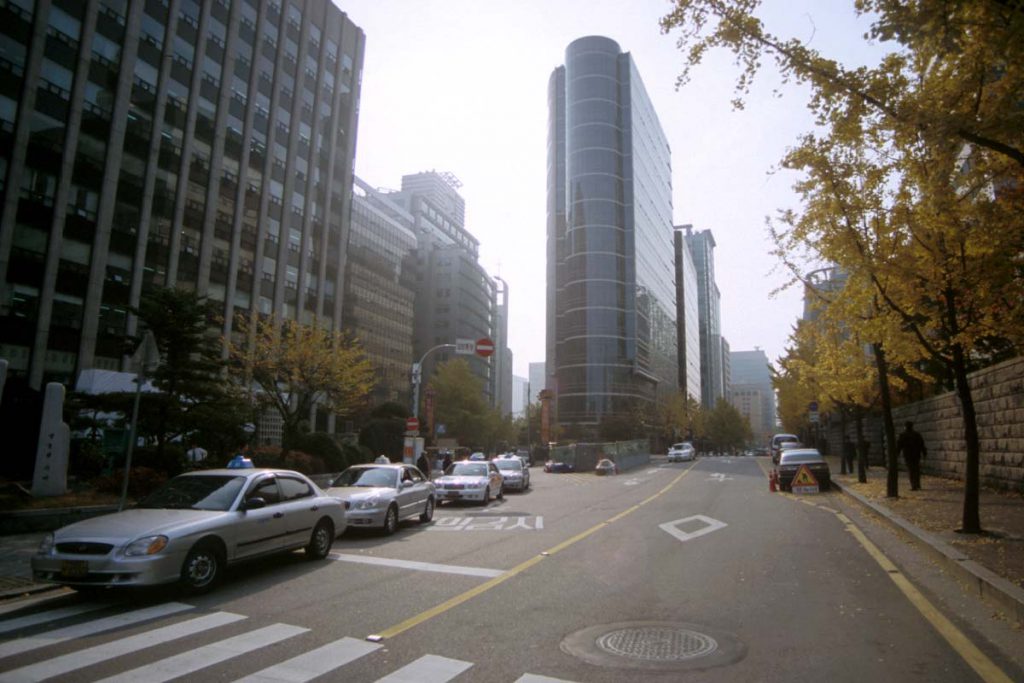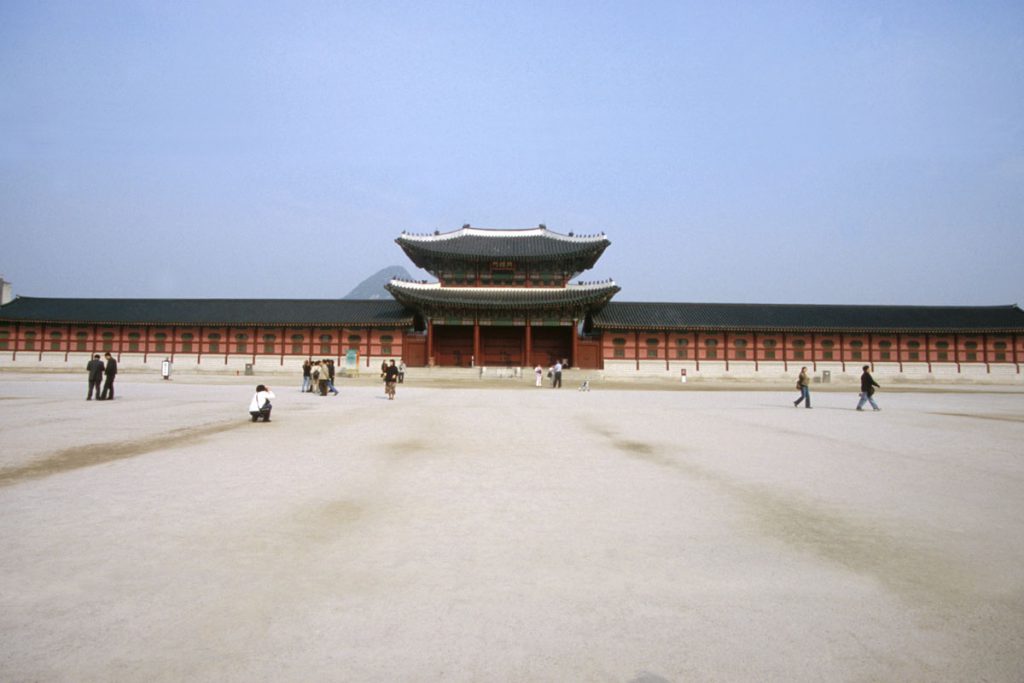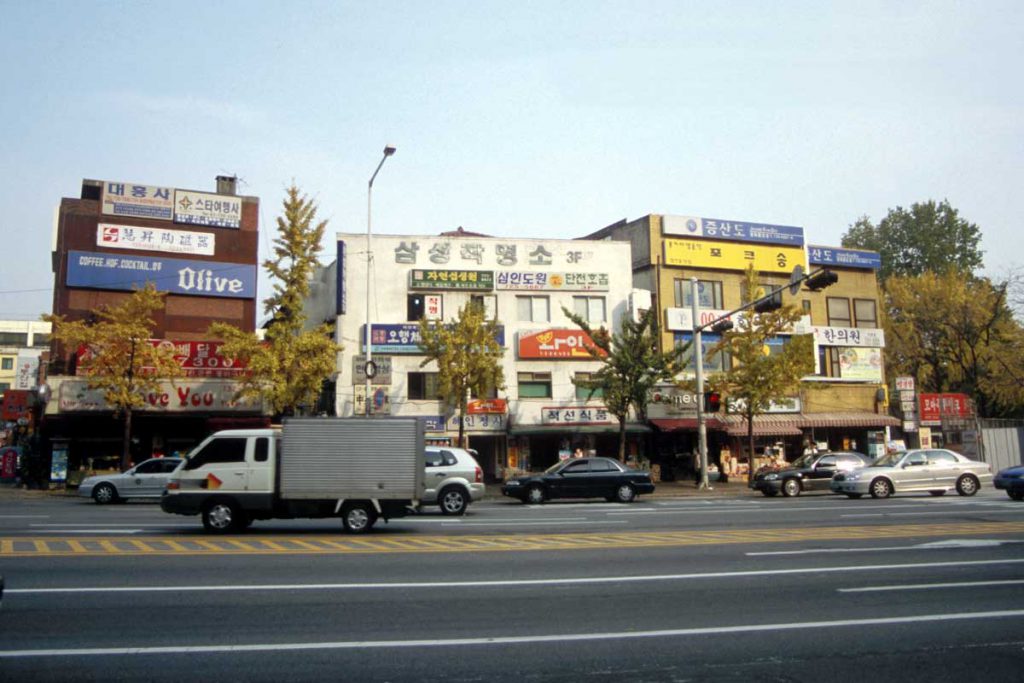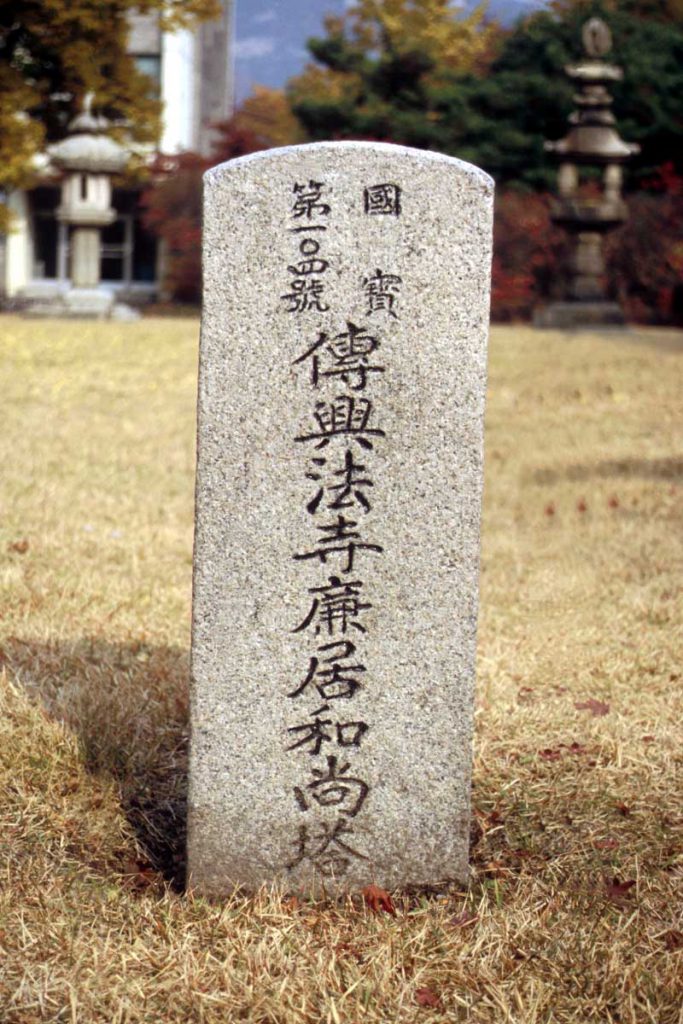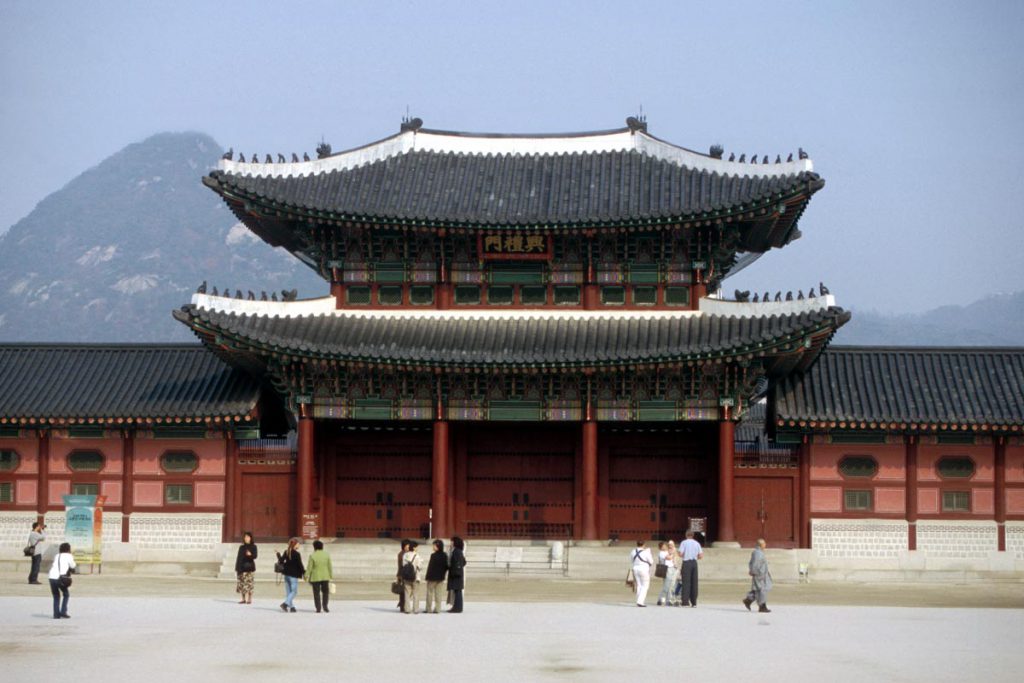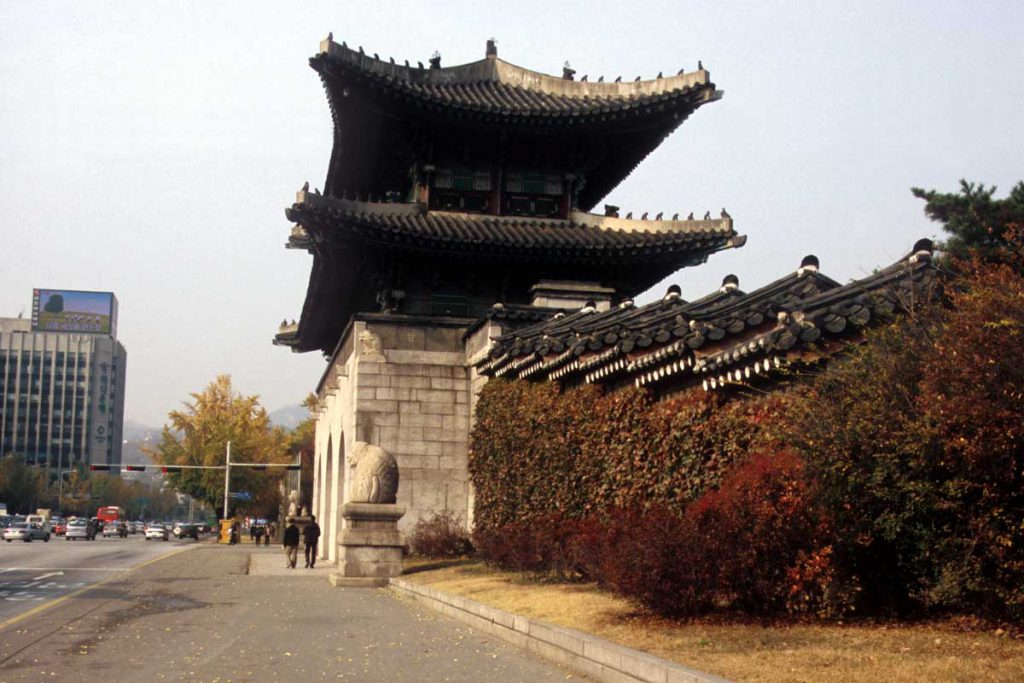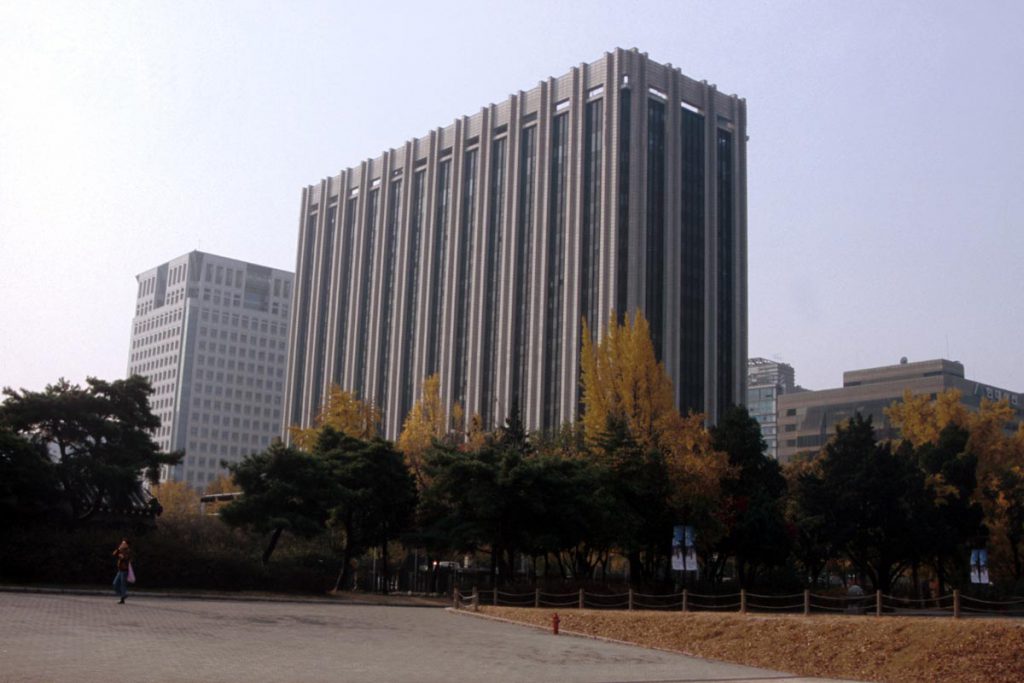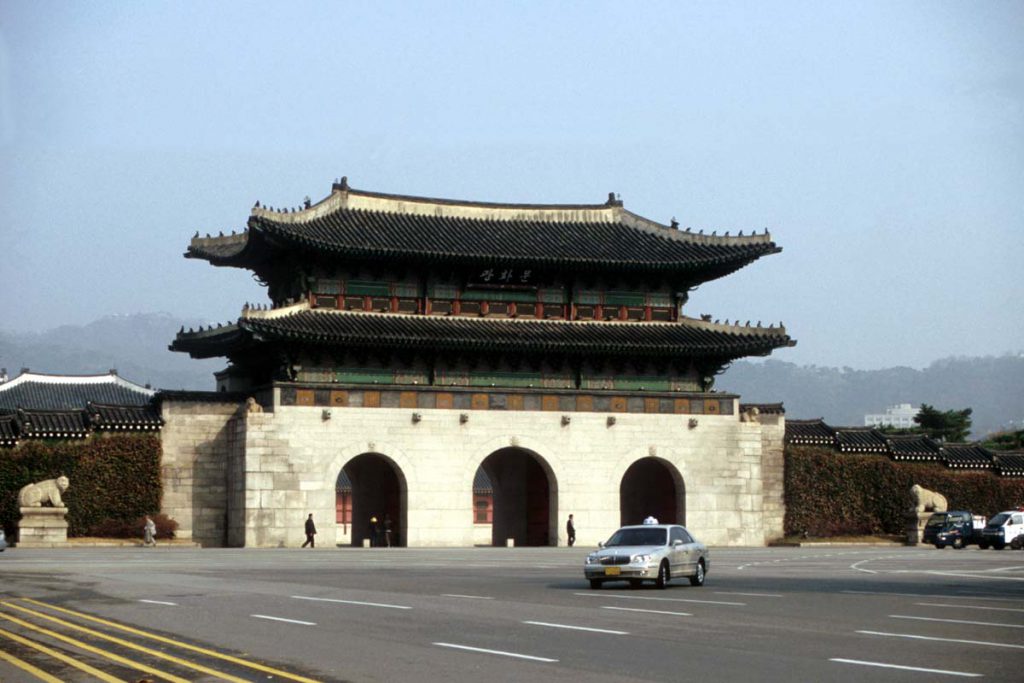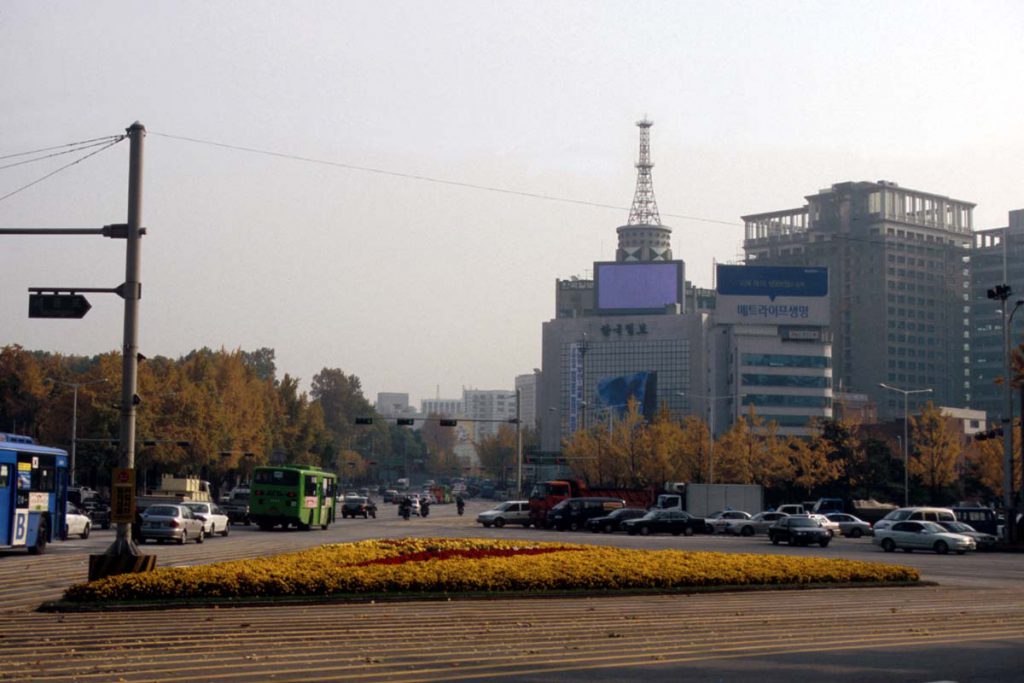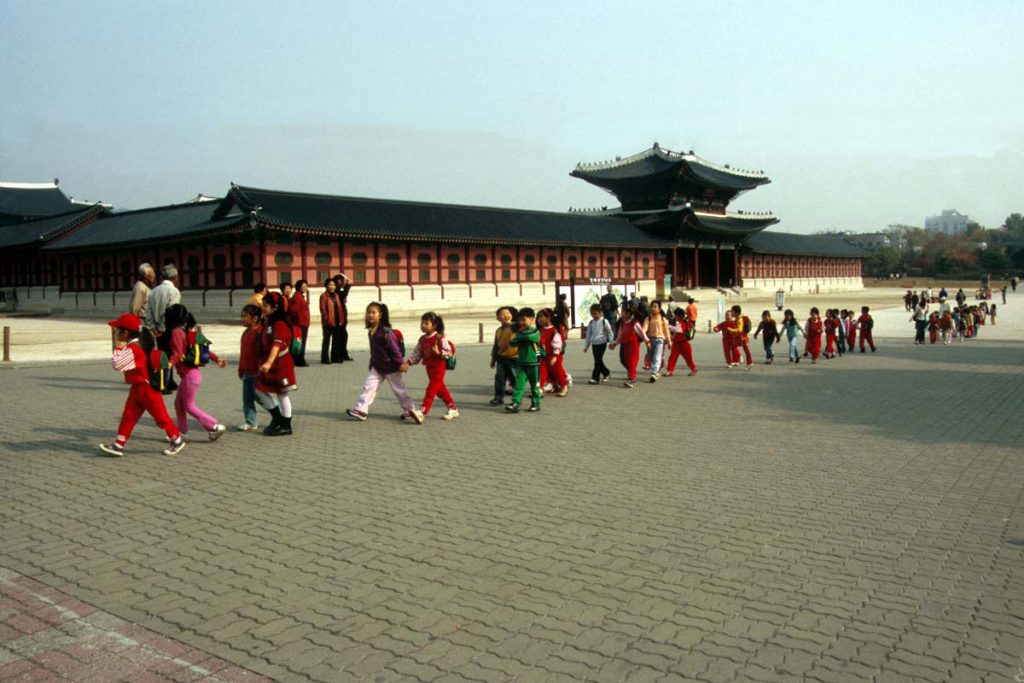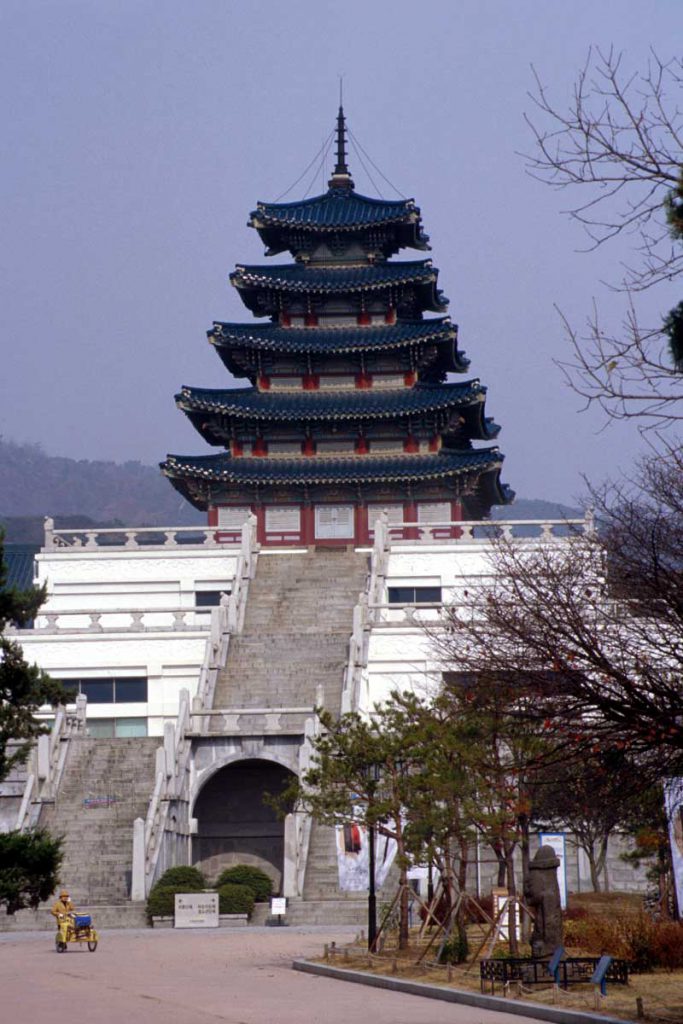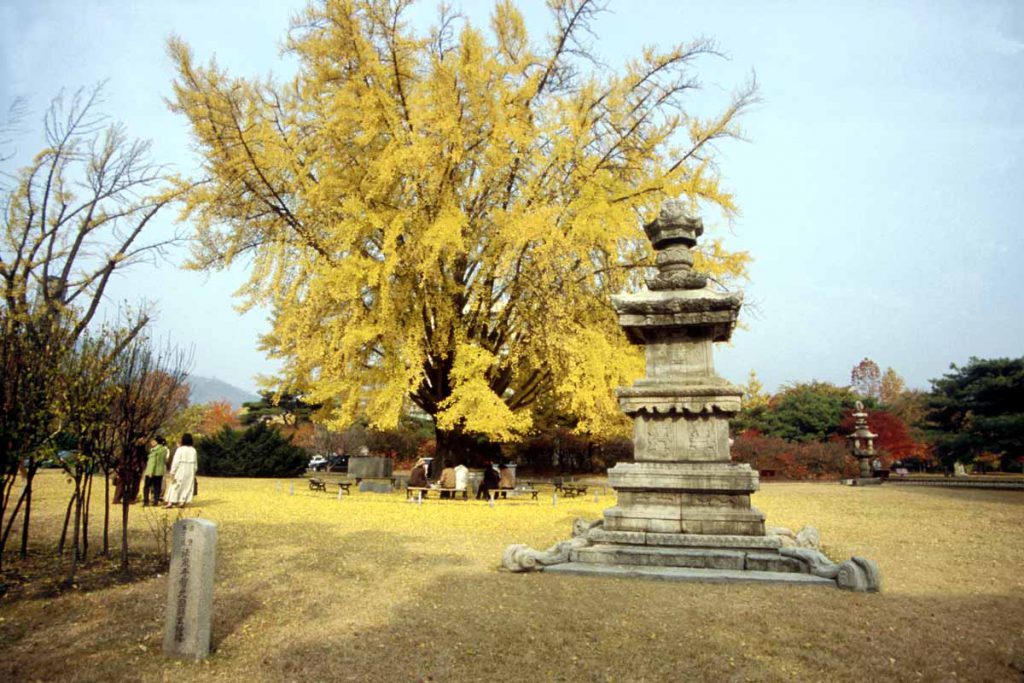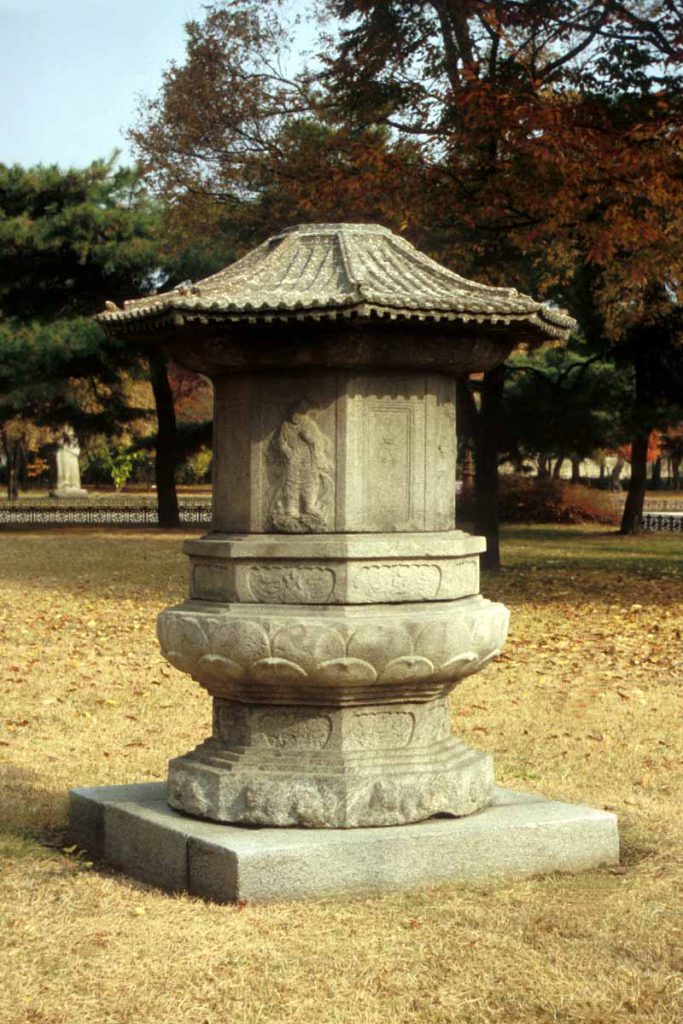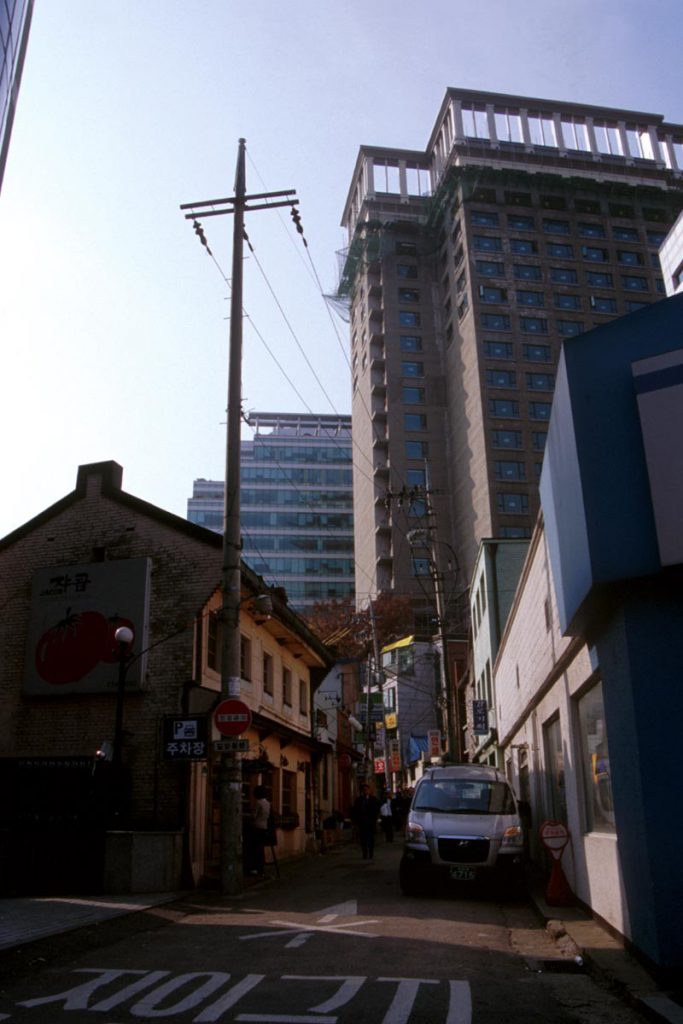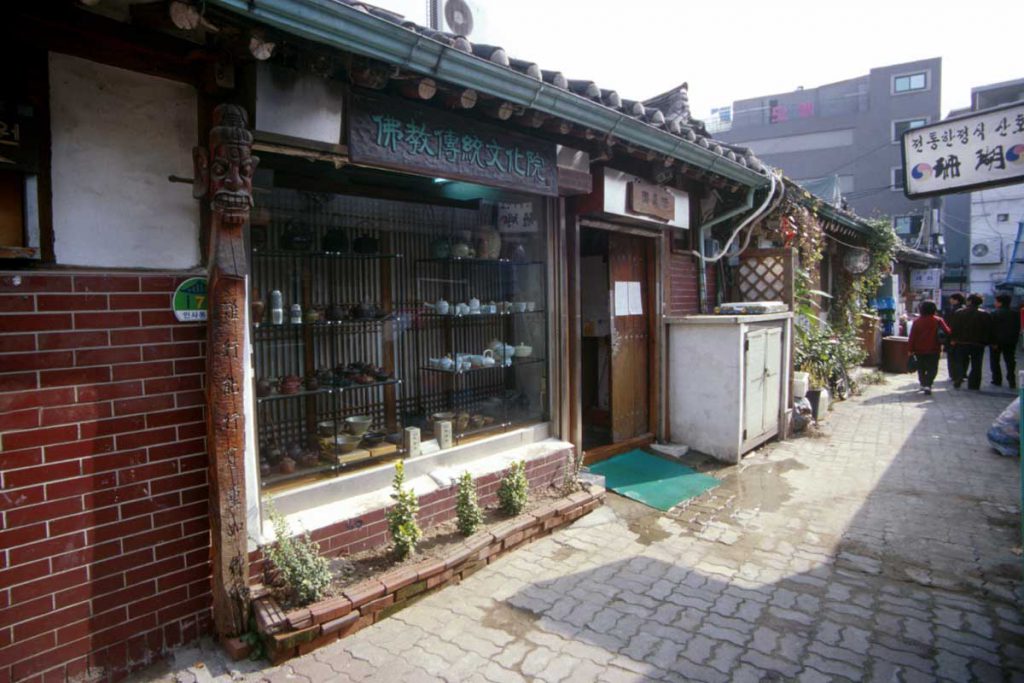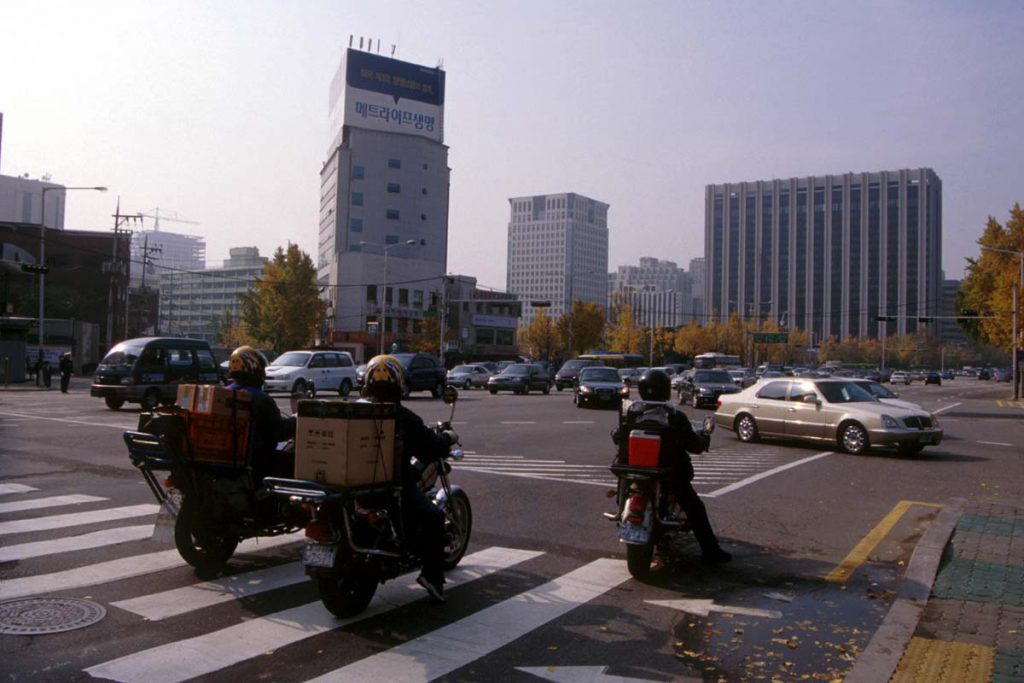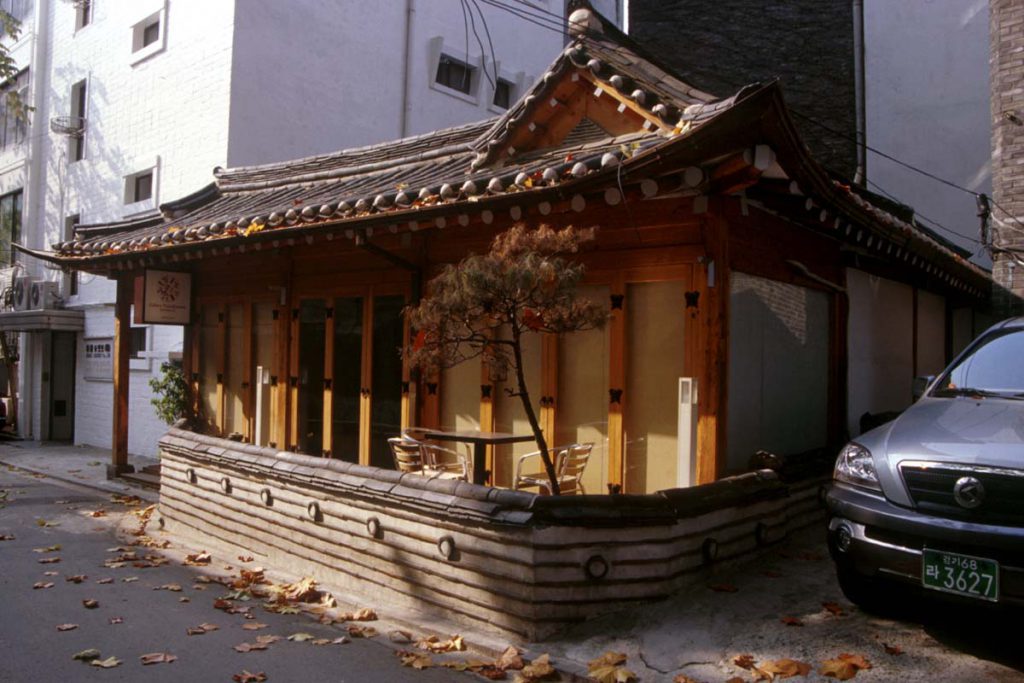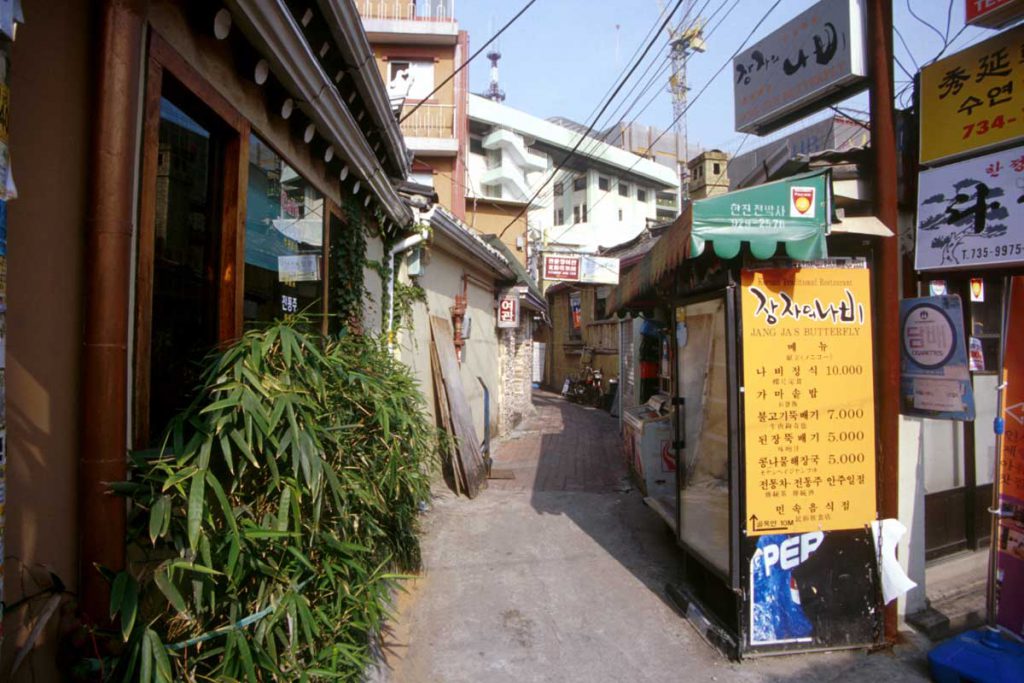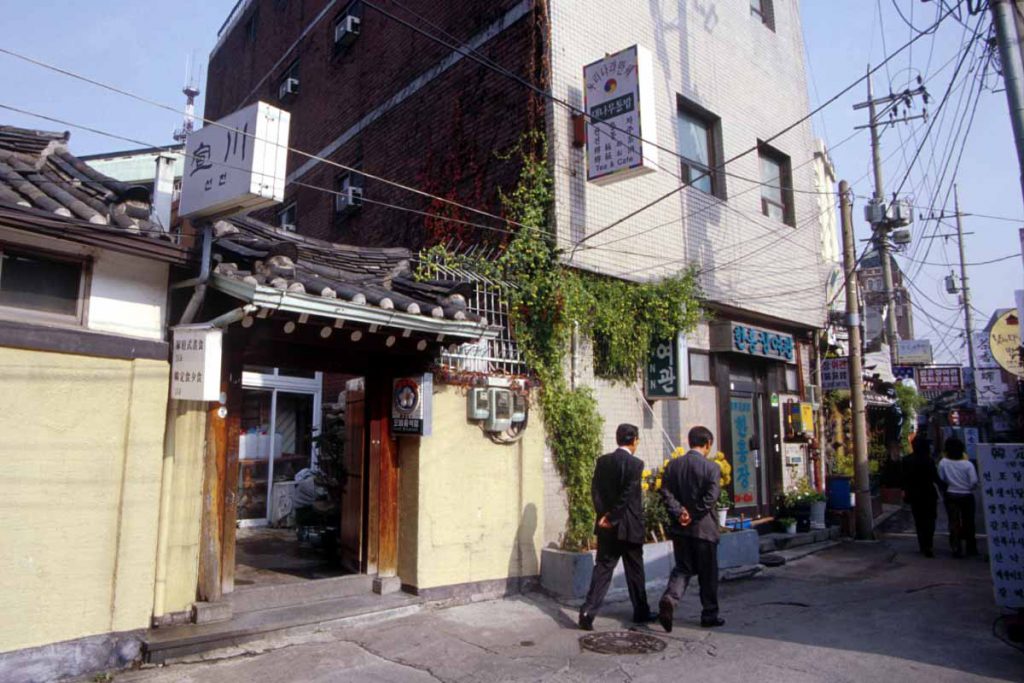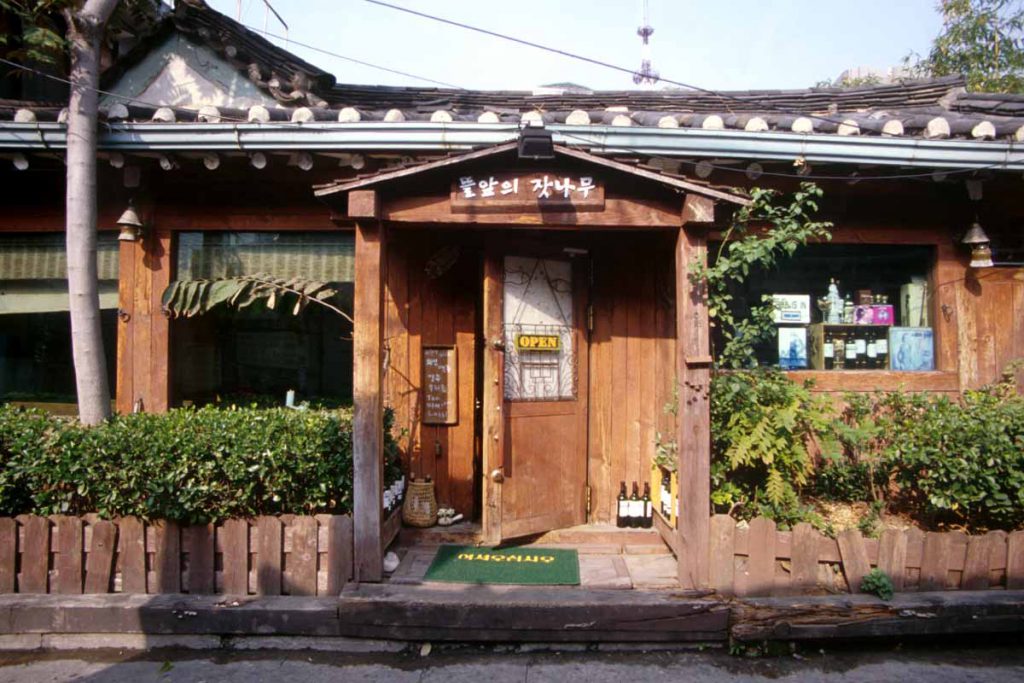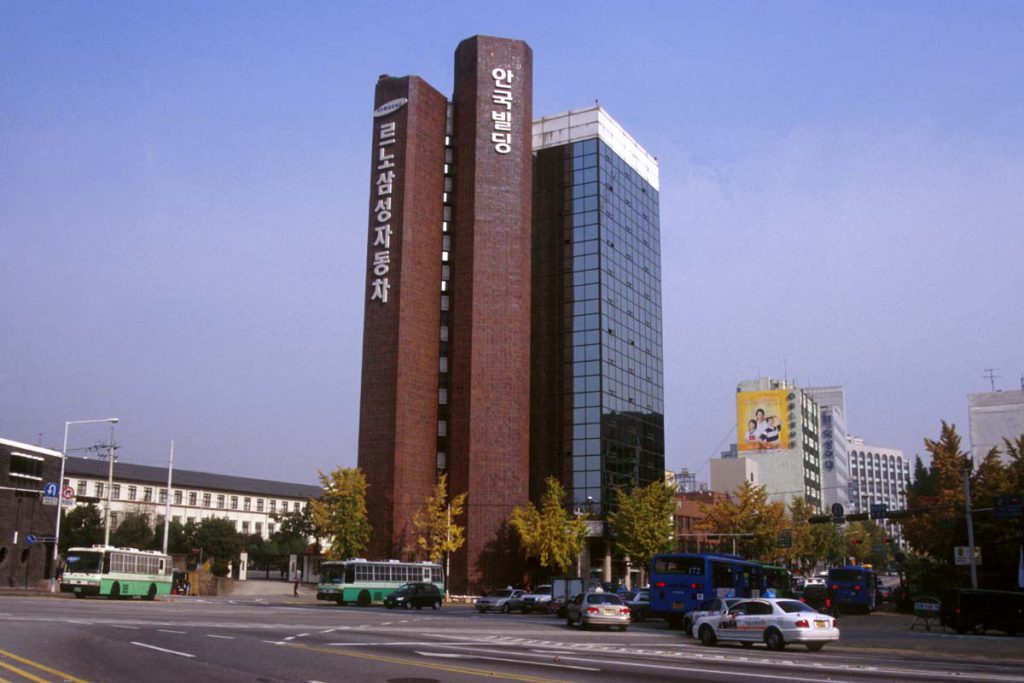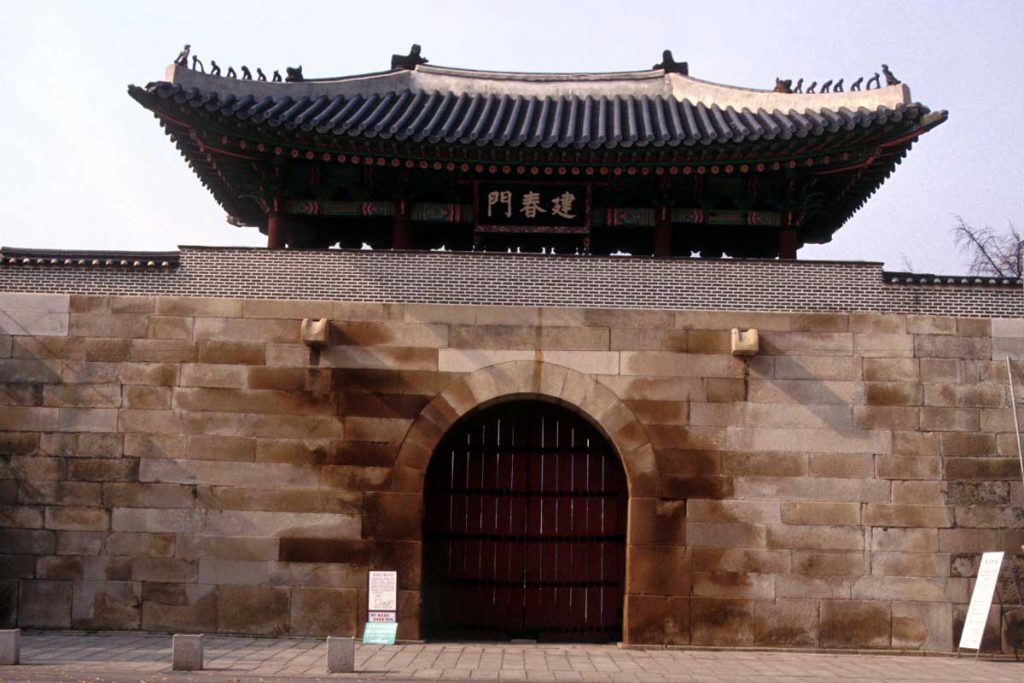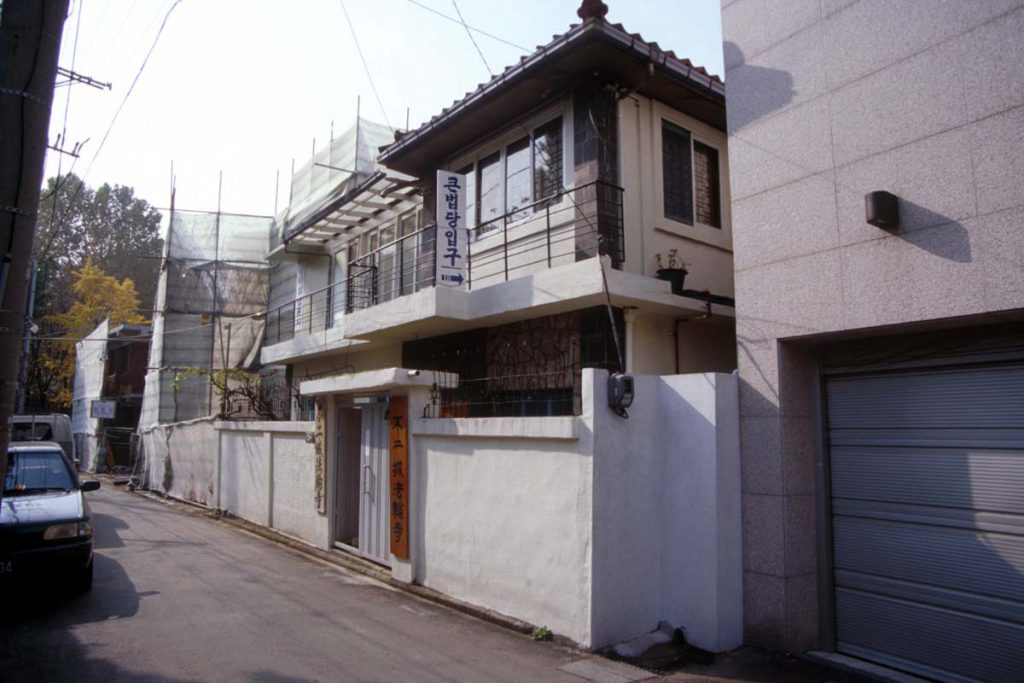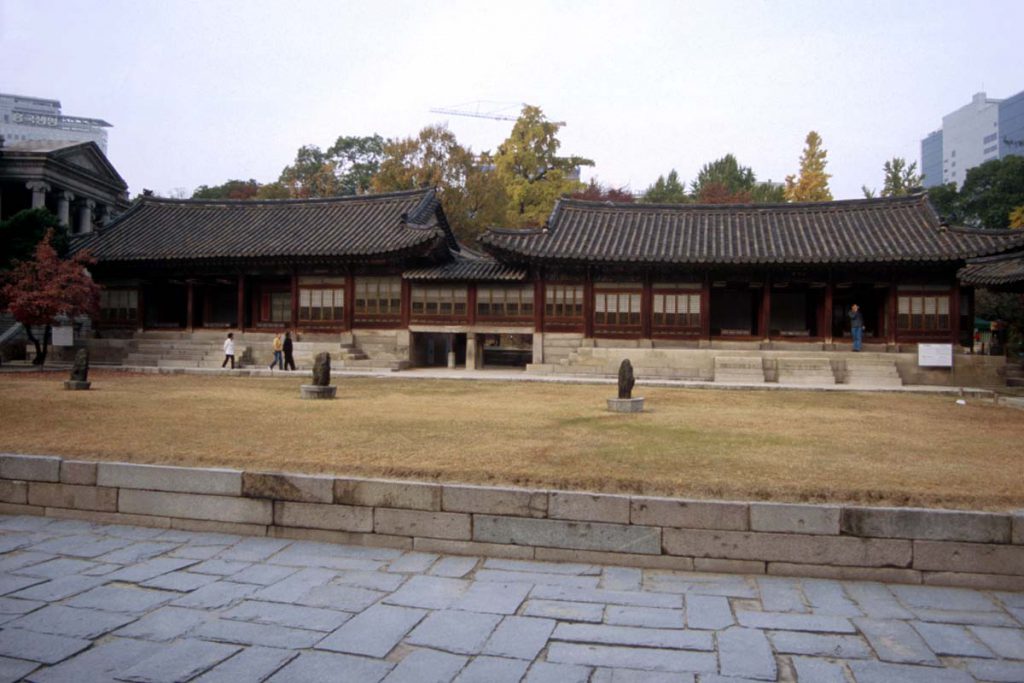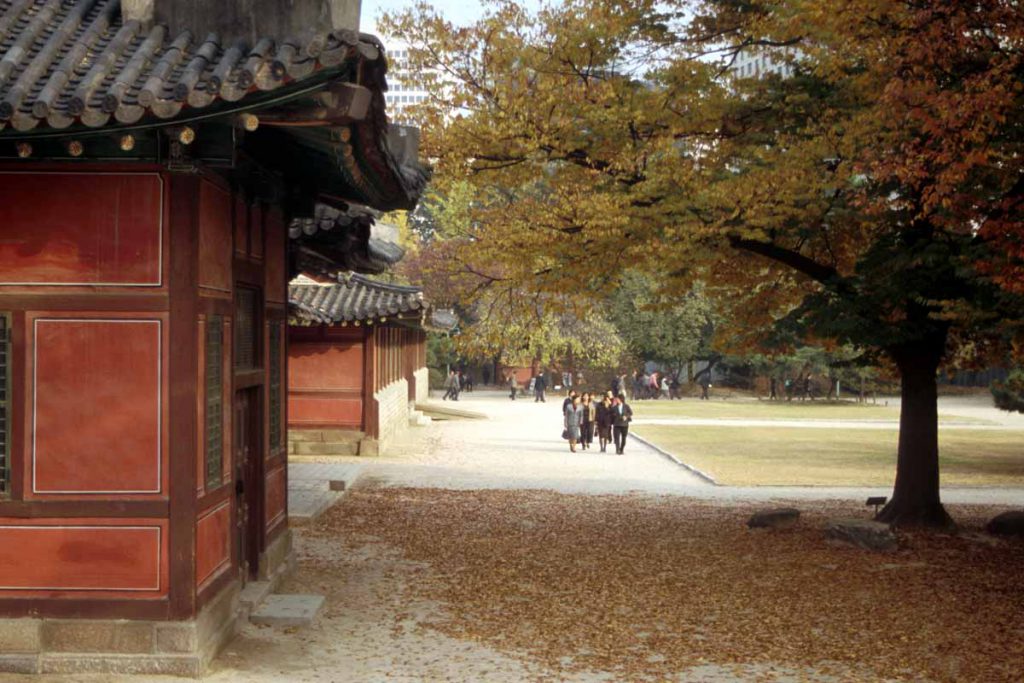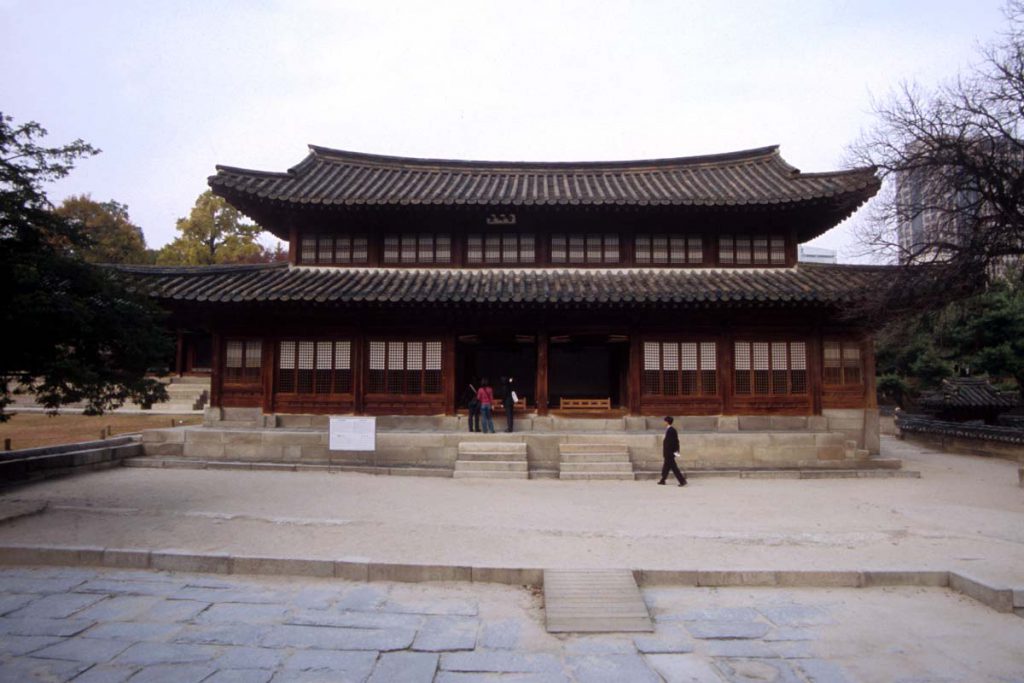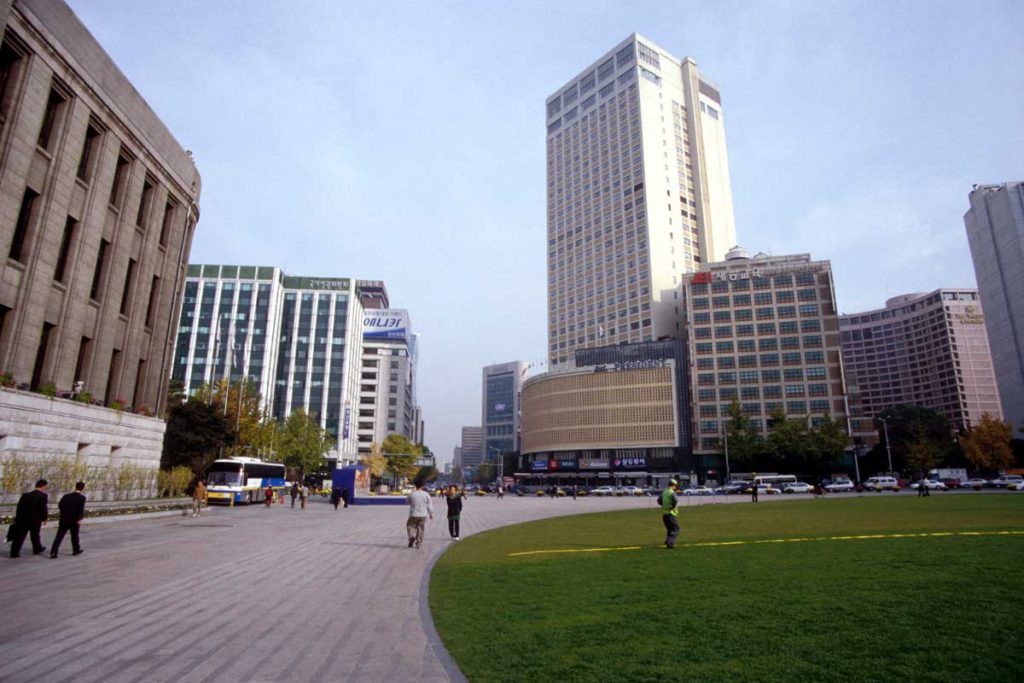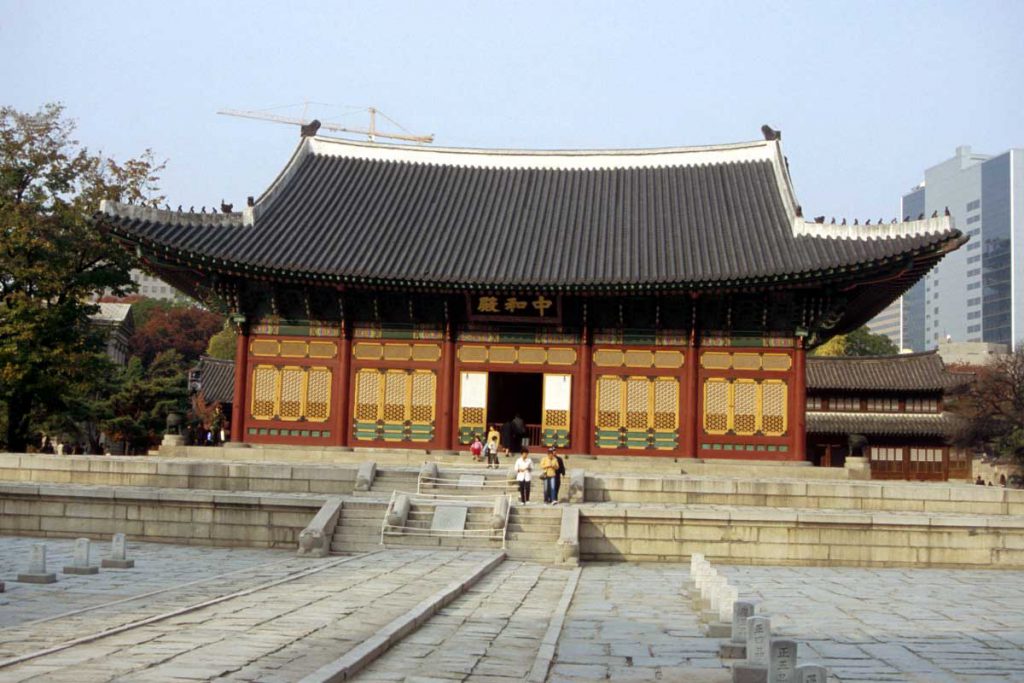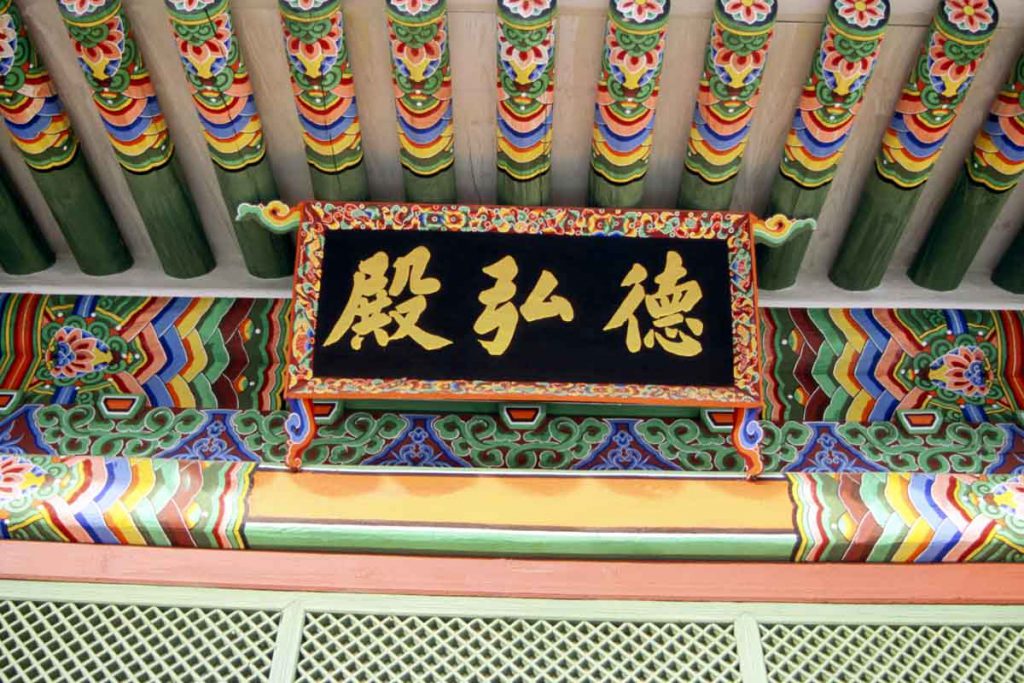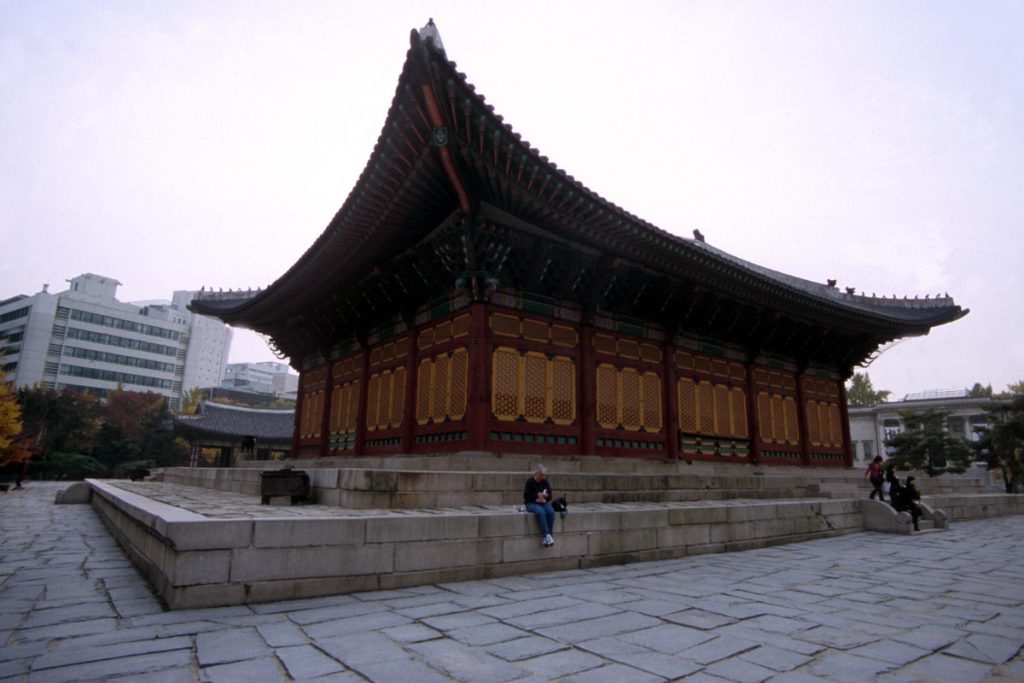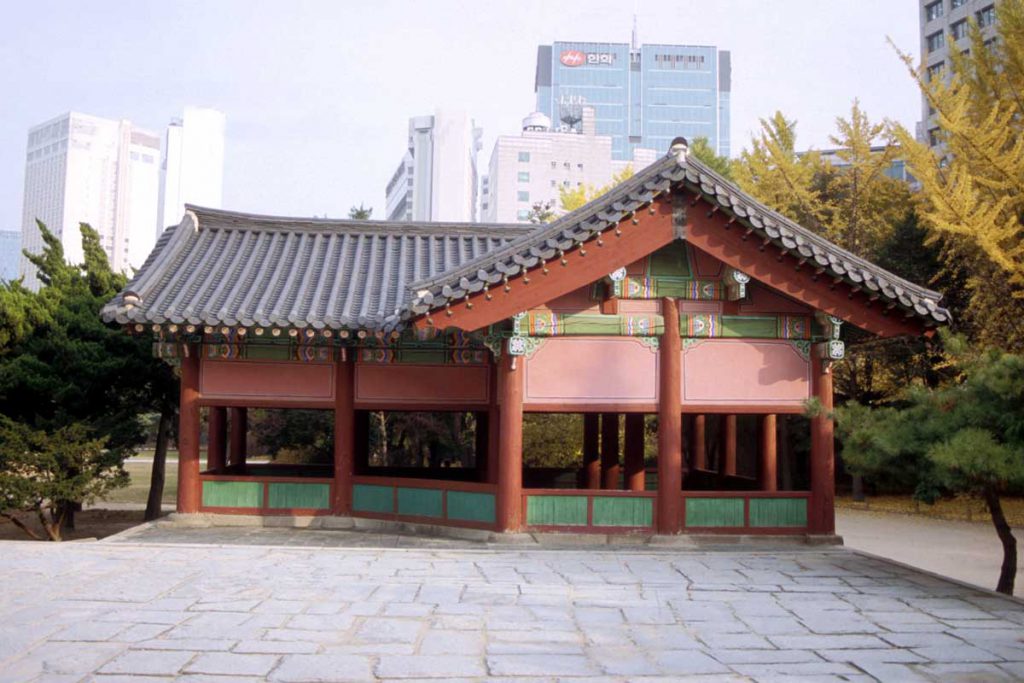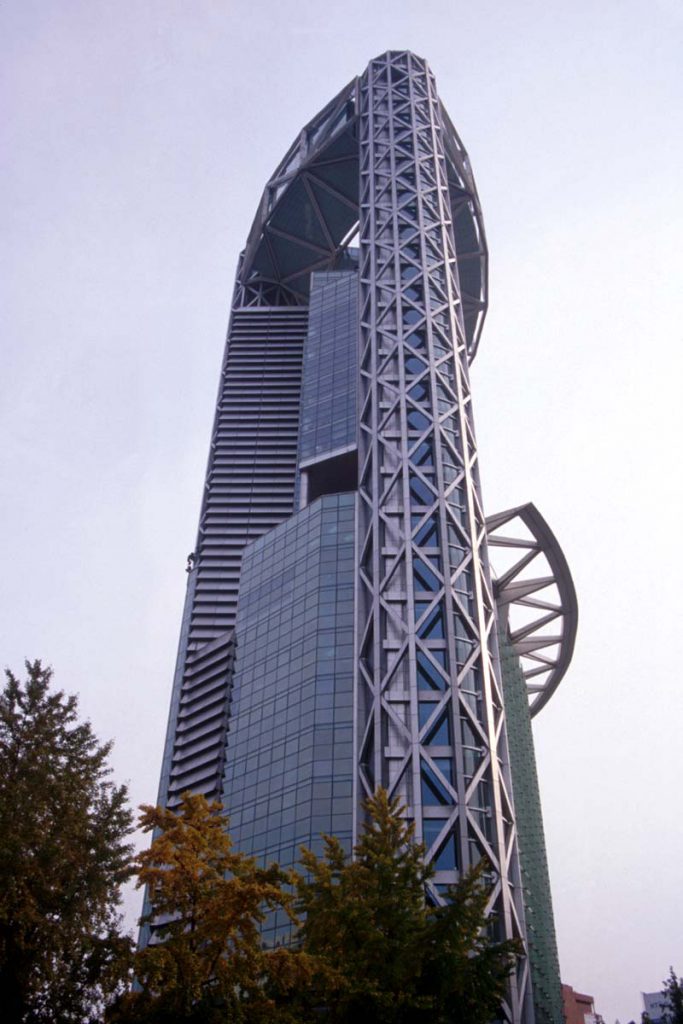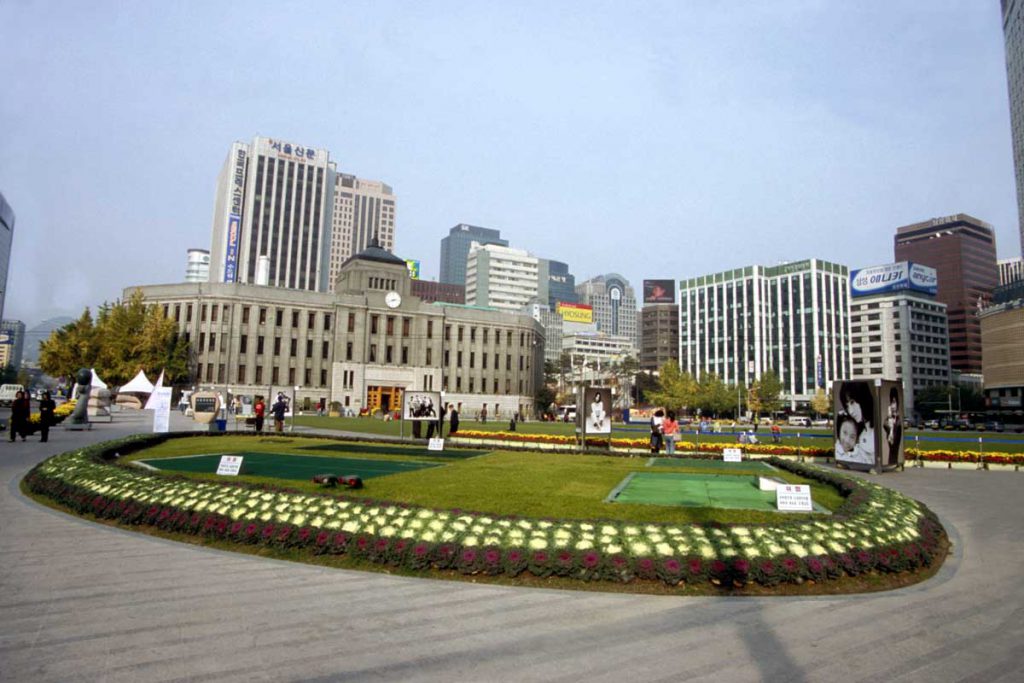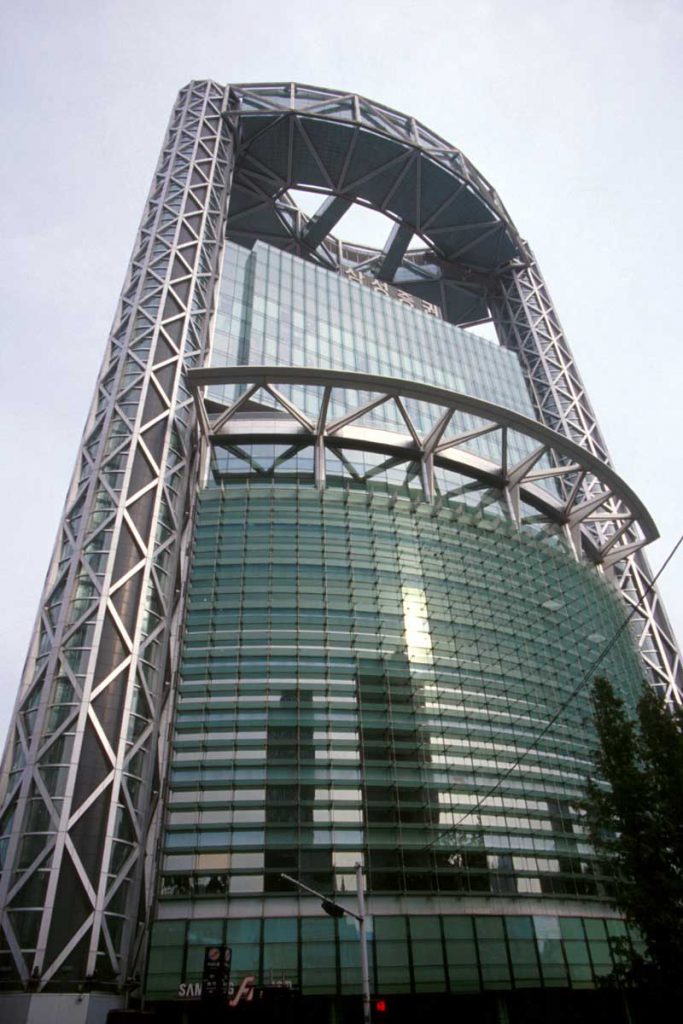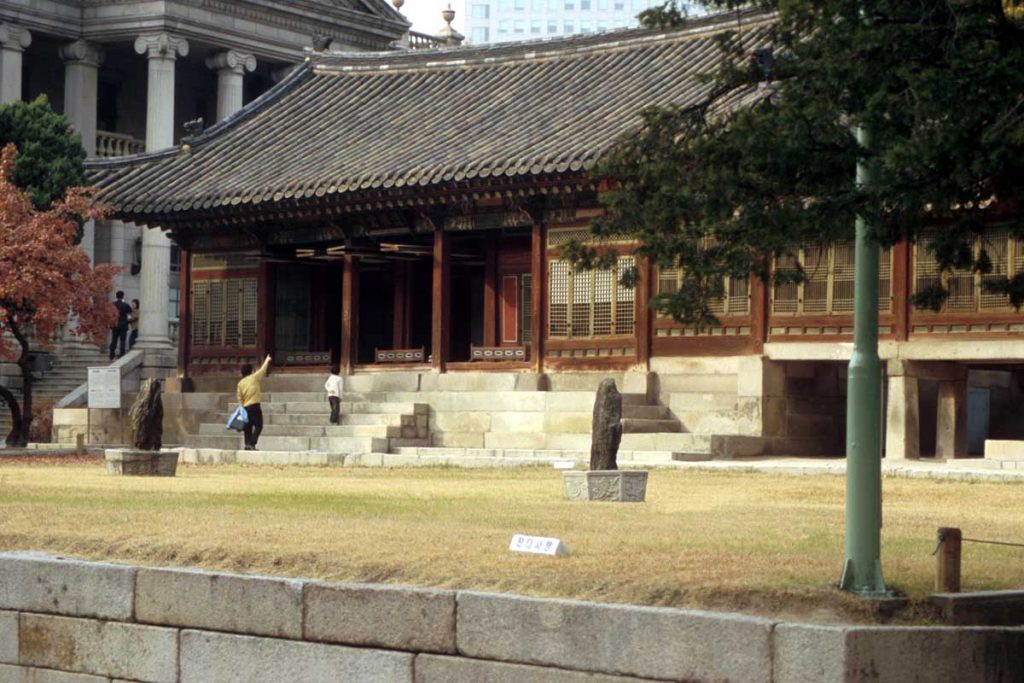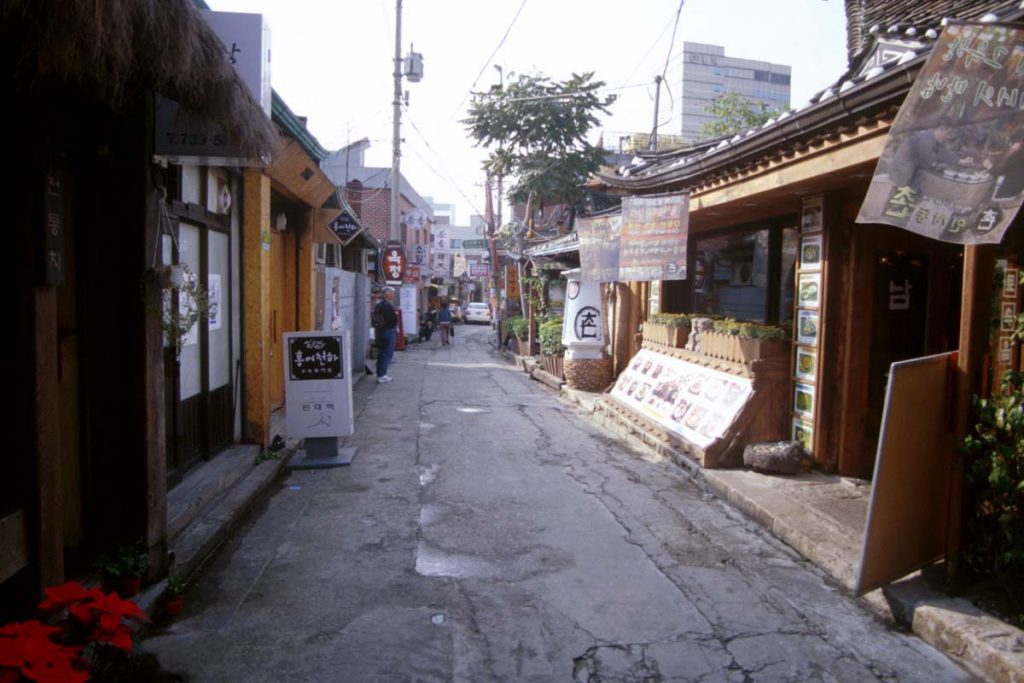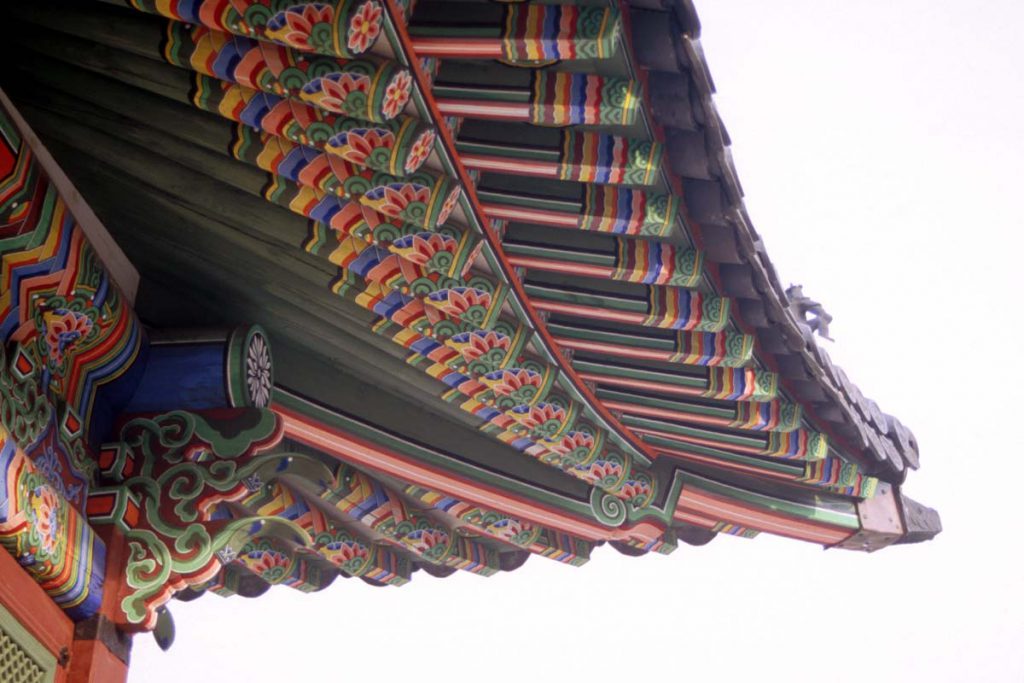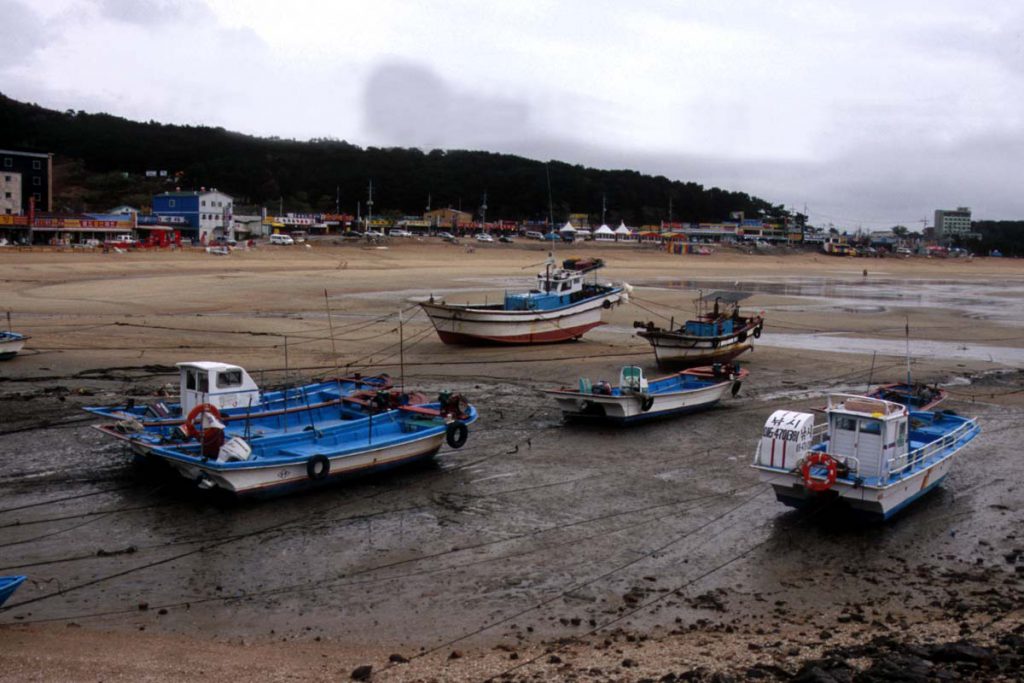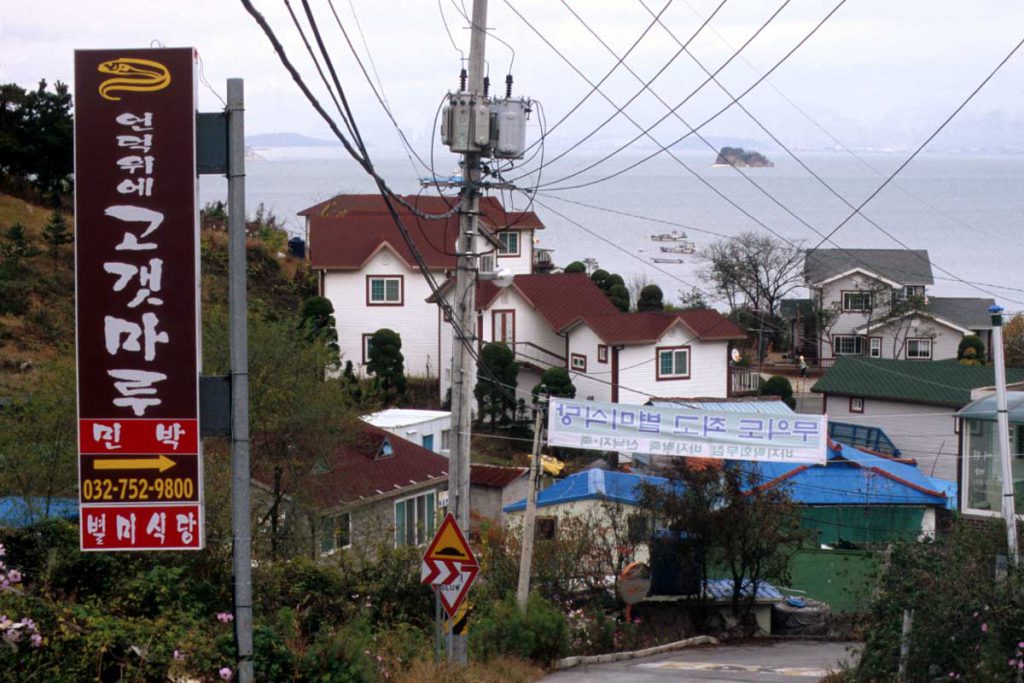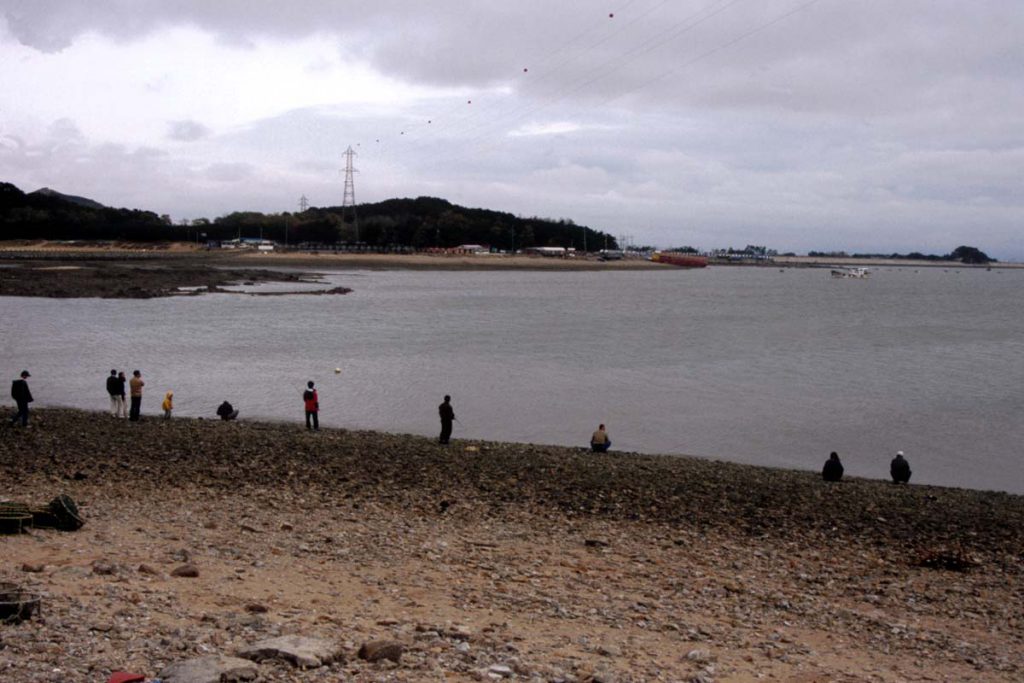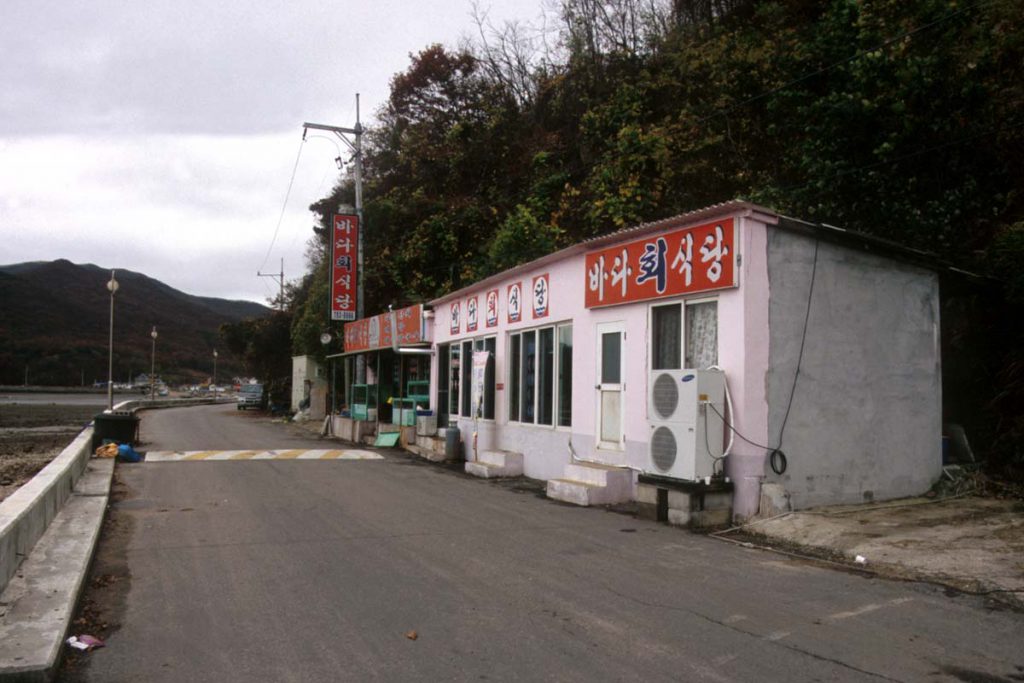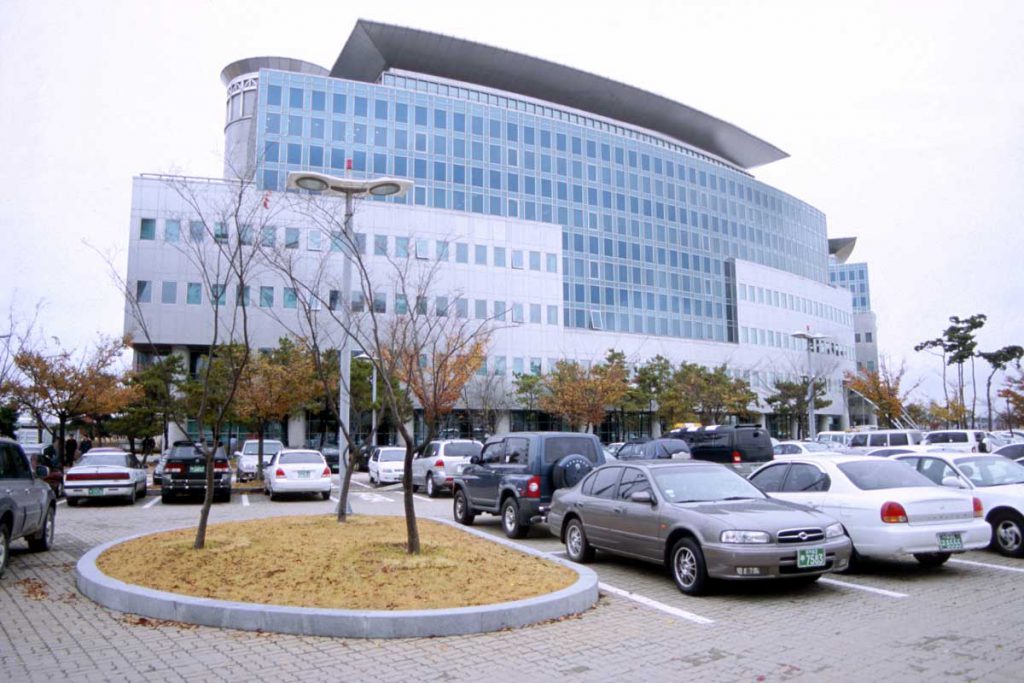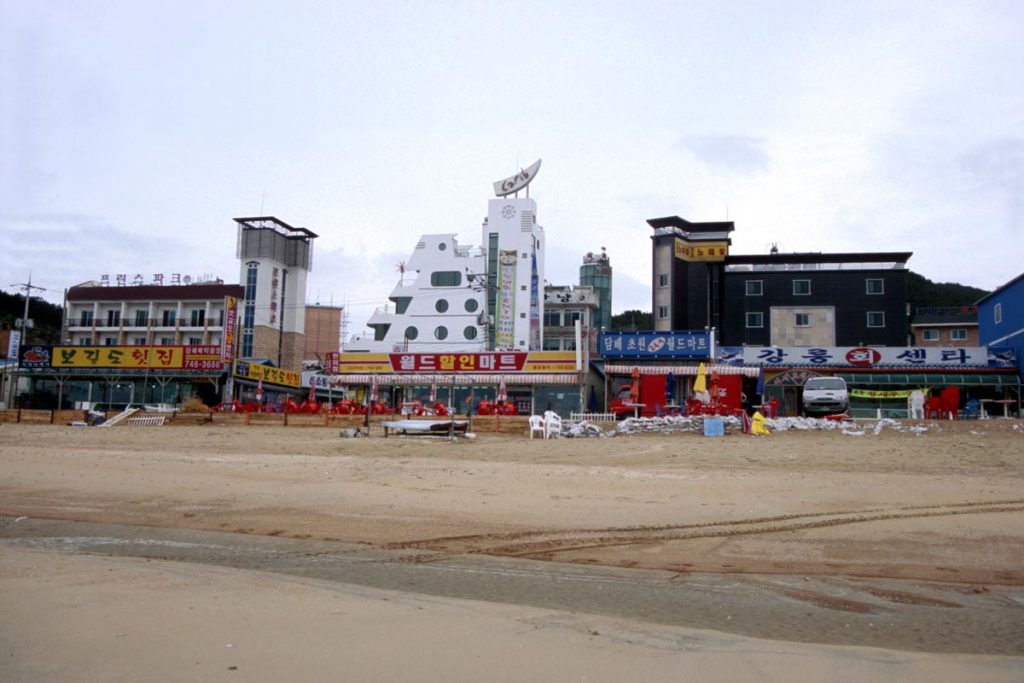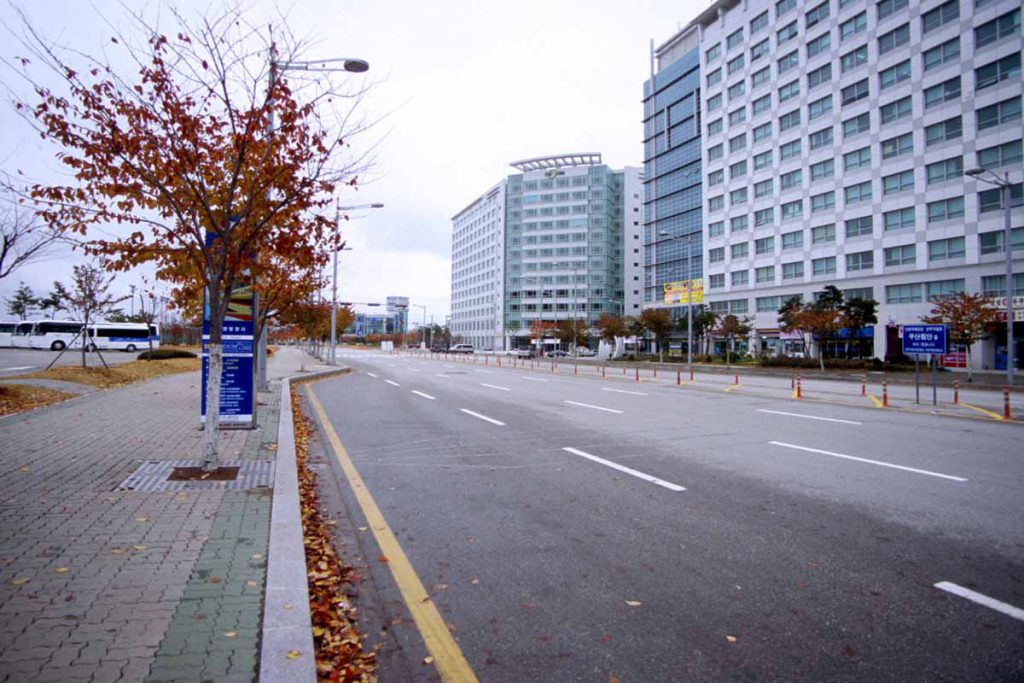Seoul
Seoul is South Korea’s capital and also its largest city. It is relatively small, with an area of about 600 square kilometres, but having a population of over 10 million makes it is one of the world’s most densely populated cities. It is densely populated not only in terms of people but also in terms of vehicles – about three million of them regularly cause widespread traffic jams. The Seoul National Capital Area – Seoul’s commuter belt – has a populace of over 20 million. Around one-quarter of South Korea’s entire population lives in and around Seoul, which is located in the northwest of the country, on the Han River.
In 2003, Seoul’s mayor, Lee Myung-bak, initiated a project to uncover and restore the 5.8-km-long Cheong Gye Cheon stream which runs through Seoul’s centre and had been covered over with a road and an elevated highway. The project is estimated to have cost over US$ 900 million and was opened to the public in September of 2005. It was considered a major success in urban renewal and beautification. A further US$12 billion is expected to be invested in redeveloping the around 800,000 m2 area near the stream into a major commercial and residential area in the coming years.
Seoul is one of Asia’s most wealthy and expensive cities, and it attracts large numbers of tourists each year. Modern Seoul is a city of skyscrapers, but it also preserves temples, palaces and other ancient sites, and its museums and art galleries display its history.
There are modern purpose-built tourist attractions for all the family, like the Children’s Grand Park amusement park, and local markets and parks to explore. Getting around Seoul by public transport is easy, and to escape the noise of the city for a while take a day trip out of the capital to the peaceful countryside of Namhansanseong Provincial Park, or Yeongjong Island’s sandy beaches. The summit of Mount Pukhansan can also be reached on a day trip.
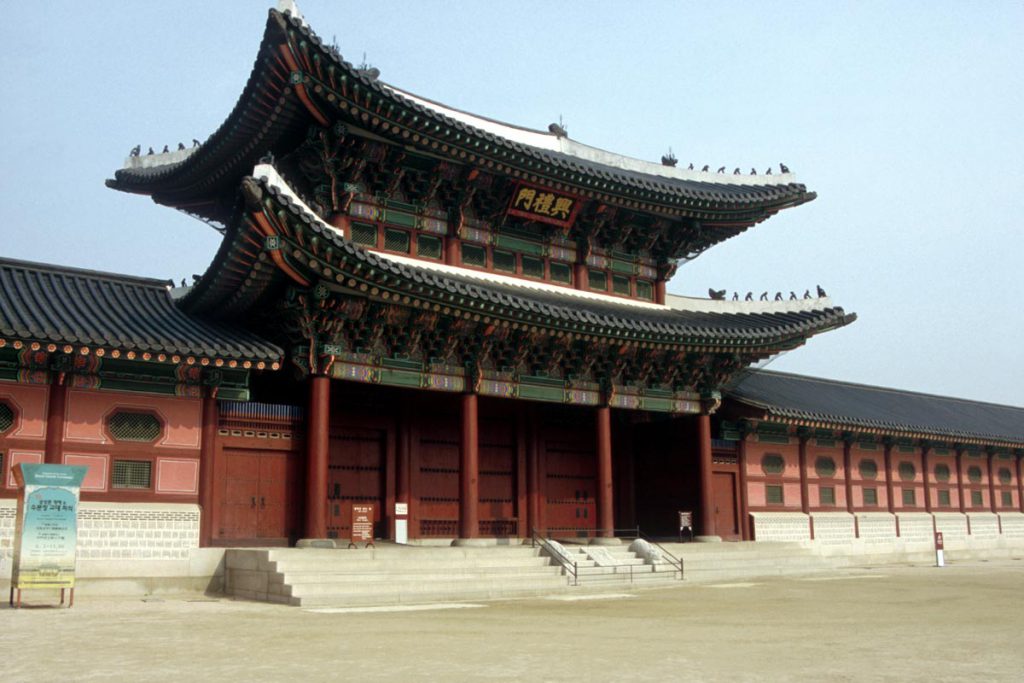
A good pace to start in this city of contrasts is the top of the Seoul Tower, which gives a great view of the city and helps with orientation. From there you will see that most of the finest palaces and the surviving old city gates are within the city centre itself, in the historical district of Jongno and the Chongno area. The Gyeonbok-Gung Palace, the grandest of them all, was almost destroyed by the Japanese in the early 1900s, but has been carefully restored and also houses the Korean National Folk Museum. Nearby Changdeok-Gung Palace has also been restored and is now a UNESCO World Heritage site. Namdaemun Gate is well worth a visit for its traditional Korean architecture and the nearby market, both of which offer great potential for photographs.
The place to go for an over-view of Korean history from pre-history to the 20th century is the National Museum of Korea, which houses objects and artefacts illustrating the country’s past, as well as touch-screens and interactive displays. For traditional Korean food, try one of the many fast food outlets and noodle bars in the city or in its markets; for something more up-market, go to Itaewon Street or Daehangno, both of which have restaurants popular with tourists. Chinese and Japanese food, as well as French and Italian cuisine, are also widely available, and most shopping centres have food courts in the basement.
History of Namdaemun Gate
Namdaemun Gate, also known as Sungnyemun, stands as a timeless symbol of Seoul’s rich history and cultural heritage. As one of South Korea’s most iconic landmarks, this majestic gate has witnessed centuries of change, embodying the resilience and spirit of the Korean people. Let’s delve into the captivating history of Namdaemun Gate, tracing its origins, significance, and enduring legacy.
Origins and Construction:
Namdaemun Gate was constructed during the Joseon Dynasty, one of Korea’s most illustrious periods, in 1398. Commissioned by King Taejo, the founder of the Joseon Dynasty, the gate served as one of the main entrances to the capital city of Seoul, then known as Hanyang. Its strategic location at the southern end of Seoul’s central axis made it a vital hub for commerce, culture, and administration.
Crafted from wood and adorned with intricate architectural details, Namdaemun Gate exemplifies the exquisite craftsmanship of traditional Korean architecture. Standing at a towering height of nearly 25 meters, the gate features a multi-tiered, pagoda-style roof, adorned with ornate carvings and vibrant paintings, reflecting the artistic prowess of the Joseon artisans.
Symbolism and Importance:
Namdaemun Gate holds profound symbolic significance in Korean culture. The name “Namdaemun” translates to “Great South Gate,” signifying its importance as the primary entrance to the capital city. Beyond its practical function as a passageway, the gate represented the authority and majesty of the Joseon Dynasty, serving as a visual testament to the kingdom’s power and grandeur.
Moreover, Namdaemun Gate played a pivotal role in shaping Seoul’s urban landscape and social dynamics. As the main thoroughfare connecting the city to the rest of the country, the gate facilitated trade, communication, and cultural exchange, fostering the vibrant growth of Seoul as a dynamic metropolis.
Historical Significance and Resilience:
Throughout its long history, Namdaemun Gate has withstood numerous challenges, including invasions, fires, and urban development. Despite facing destruction during the Japanese invasion of Korea in the late 16th century and the Korean War in the 20th century, the gate was meticulously restored each time, attesting to the unwavering spirit of the Korean people and their commitment to preserving their cultural heritage.
However, Namdaemun Gate faced its greatest trial in 2008 when a devastating arson attack resulted in significant damage to the structure. The incident shocked the nation and sparked a massive restoration effort to rebuild the gate to its former glory. After years of painstaking restoration work, Namdaemun Gate was reopened to the public in 2013, reaffirming its status as a national treasure and a symbol of resilience.
Legacy and Cultural Heritage:
Today, Namdaemun Gate stands as a testament to Korea’s rich cultural heritage and enduring legacy. It serves as a popular tourist attraction, drawing visitors from around the world to marvel at its majestic beauty and learn about its storied past. Moreover, the gate continues to symbolize the spirit of the Korean people, reminding them of their collective resilience and determination in the face of adversity.
As a designated National Treasure of South Korea, Namdaemun Gate holds immense historical, cultural, and architectural significance. It serves as a tangible link to Korea’s past, preserving the traditions and values of previous generations for future generations to cherish and admire.
Namdaemun Gate stands as a timeless testament to Seoul’s rich history and cultural heritage. From its humble origins during the Joseon Dynasty to its enduring legacy as a national treasure, the gate has weathered centuries of change, emerging as a symbol of resilience, strength, and national pride. As one of South Korea’s most iconic landmarks, Namdaemun Gate continues to inspire awe and reverence, reminding us of the enduring power of history to shape our collective identity and heritage.
